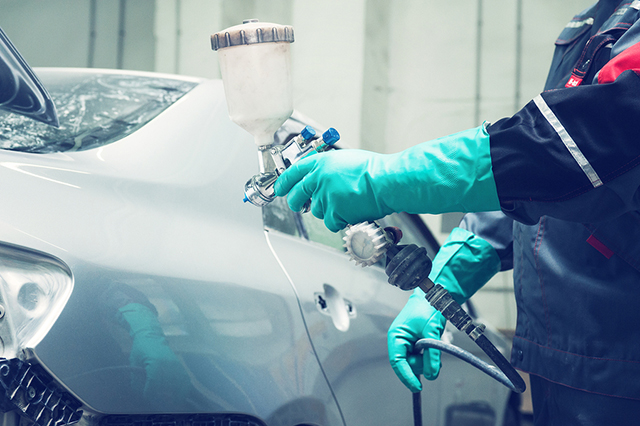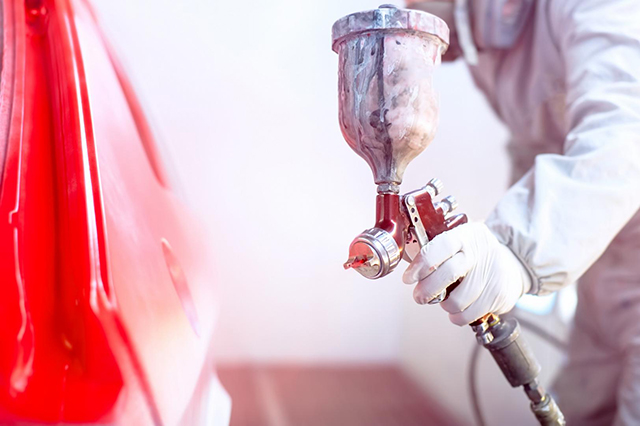Do you have a car or truck that runs great but looks horrible? (You can actually spot mine from outer space using Google Earth!) Would you like the looks of a newer vehicle without the new car price? If either is the case, then the answer may be to paint your ride! You can turn again your old age car because guys from Superiorshine.com.au can do a car paint protection in Melbourne if you are there in the area.

But where do you start? What’s involved? How can you do it without breaking your wallet?
Well, the answer to these questions will depend on a few factors. First off, is your vehicle worth investing in? For example, does it have a sound engine and transmission? Is it likely to continue running good for a while? Is the body still in decent condition? Or is it eaten away with rust? These are important questions to answer before deciding to invest more money into your vehicle.
Next, what do you want it to look like when it is all done? And how long do you want it to last? These two questions will help you figure out a lot. If you are looking for a high quality paint job with panels straighter than a ruler, then expect to pay. But if you just want it to look good and last a few years, then you may be able to get by with a cheaper paint job. Paint jobs can cost as low as a few hundred dollars (Maaco Special) and cost as high as 3 to 5 thousand dollars. So, really, the cost will depend on what kind of final results you are shooting for in the end. With this in mind, don’t be fooled by auto body shops that promise much for very little. The truth is-you get what you pay for when it comes to a paint job. Keep yourself informed. And take the time to shop around. With the answers to these questions you should be in a better position to make a good decision.
What, though, makes one paint job so expensive and another so cheap? Why such a difference?
A big reason has to do with the type of paint materials that will be used. Acrylic enamels are the cheapest. But they may come only in certain colors and only last for two or three years. Urethane enamels can come in almost any color and be as durable as anything out there, but this will depend on the quality used. Urethane enamels are more durable than acrylic enamels but will cost more. Both have the shine and color built into one. Both are economical. However, sometimes these can lack luster and depth. In addition, if you want a color with metallic or pearl flakes in it, then, as any experienced paint tech will tell you, enamels often are difficult to work with.
The most durable and widely used paint on most vehicles today are basecoat/clear coat systems. These come in every color imaginable, have a deep shine, and can often be sanded and buffed later in order to remove any light scratches. Also, they can last from 5 to 15 years; or even longer. However, basecoat/clear coat systems can cost significantly more; but may be well worth it depending on how you answered some of the questions posed earlier. Maaco offers to paint a car for a few hundred dollars but will use an acrylic enamel. Maaco can also paint a car with a basecoat/clear coat system, but last time I checked, even Maaco’s base price for this is about $1500. Add to all this lots of body work, removing parts, and preparing panels and the price can go higher.
However, sometimes money can be saved by using a more economical basecoat/clearcoat system. For example, the Sherwin William’s brand “ULTRA 7000” basecoat color can cost anywhere from $50 – $90 per pint. (It is great paint.) But Sherwin Williams also has an economical line of basecoat color that costs about $10 – $20 per pint; a significant savings. And, in my experience, it gives you many of the same benefits as other, more expensive, basecoat/clearcoat systems. The differences between the premium grade paint systems and more economical ones may well be seen in how well they resist fading and peeling as time goes on. So, again, what you decide in this regard depends on how you answered some of the questions that I posed earlier.
What’s left to be said, then?
Be shrewd. When a shop offers to paint your car ask them some questions. “What type of paint will you use? How much care will you take with the body work? Will you take parts off so there is no danger of peeling later on? Will you wet-sand and polish out any dirt left in the paint when done? If I removed parts and did some of the prep myself could I get a discount?” Any reputable shop will be happy to let you know what is involved. And most will even work with you to come up with a plan for your car or truck that will fit your budget while giving you the look you want.
So, if painting your ride is something you would like to do, then give it some thought. And when you do, don’t forget to ask others about your local, small-town body shops. Many of them do great work and care about the reputation they leave with their friends in the community.
For more information, please visit me at [http://www.paintnbodywork.com]. Read other helpful articles, get tips and advice on common vehicle appearance, restoration questions. Browse our articles, our top how-to video picks, and shop at our online selection of stores that have great deals on auto parts, restoration supplies, and other items. Get recommendations on our favorite products for detailing, painting, repairing dents on all of your vehicle projects. Ask us a question if you’d like!
Danny Leary
[http://www.paintnbodywork.com]
Danny Leary has been in the auto body repair field for many years. He enjoys sharing his knowledge and resources to help others with their auto restoration projects. He also has experience in Paintless Dent Repair, Windshield Chip Repair, Headlight Restoration, Vehicle Graphic Wrap Design, and Website Design.
Article Source: http://EzineArticles.com/expert/Danny_Leary/571469
Article Source: http://EzineArticles.com/3838430

